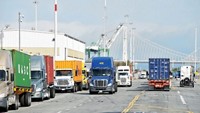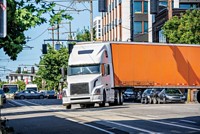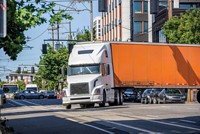Advertisement
Grab your lab coat. Let's get started
Welcome!
Welcome!
Create an account below to get 6 C&EN articles per month, receive newsletters and more - all free.
It seems this is your first time logging in online. Please enter the following information to continue.
As an ACS member you automatically get access to this site. All we need is few more details to create your reading experience.
Not you? Sign in with a different account.
Not you? Sign in with a different account.
ERROR 1
ERROR 1
ERROR 2
ERROR 2
ERROR 2
ERROR 2
ERROR 2
Password and Confirm password must match.
If you have an ACS member number, please enter it here so we can link this account to your membership. (optional)
ERROR 2
ACS values your privacy. By submitting your information, you are gaining access to C&EN and subscribing to our weekly newsletter. We use the information you provide to make your reading experience better, and we will never sell your data to third party members.
Environment
Los Angeles Airport Pollutes City Air For Miles Downwind
Air Quality: Elevated concentrations of ultrafine particulate matter from jet emissions extend at least 10 miles east of the airport, raising health concerns for area residents
by Deirdre Lockwood
May 30, 2014

As planes take off and land at busy airports, their exhaust pollutes surrounding areas with contaminants, including ultrafine particles that may contribute to heart and lung disease. A new study shows that at Los Angeles International Airport (LAX), the sixth busiest airport in the world, this pollution affects a larger area than previously predicted. A team of researchers found elevated concentrations of ultrafine particles up to 10 miles east of the airport (Environ. Sci. Technol. 2014, DOI: 10.1021/es5001566). The data raises alarms about the health impacts of airport pollution on those who work and live nearby, the researchers say.

Particulate matter is one of the major pollutants regulators and environmental scientists monitor to determine air quality in urban areas. For example, the Environmental Protection Agency sets standards for concentrations of fine particulate matter, or particles less than 2.5 μm in diameter. These particles are strongly linked with increased risk of heart and lung disease.
But recently scientists have grown especially concerned about ultrafine particles, less than 0.1 μm in diameter, which are neither regulated nor routinely measured. They can deposit deep in the lungs, where the particles can move into the bloodstream.
Since these ultrafine particles are abundant in jet exhaust, researchers have previously studied their concentrations at fixed locations up to about three miles from airports. But to study a larger area in real time, Scott A. Fruin, an environmental health researcher at the University of Southern California, and colleagues outfitted a car with air monitoring equipment and drove around the Los Angeles area.
The prevailing winds in Los Angeles blow from the west and are remarkably consistent throughout the day and year. So, on about 30 days over a three-year period, the team surveyed areas downwind of the airport for a dozen air-quality metrics with the mobile monitoring system. Using a condensation particle counter, they measured the concentrations of total particles, which closely approximate concentrations of ultrafine particles.
Fruin was surprised by their findings. Over an area of about 60 km2 downwind of LAX, where hundreds of thousands of people live or work, the particle number concentration was at least twice that of nearby urban areas. By taking measurements near freeways in areas that were not downwind of the airport, the team estimates that freeway traffic contributed only 5% or less of the ultrafine particulate matter measured in the LAX area.
Fruin says the team expected to reach a point where the particle number concentrations were not elevated, but they never did. “We just ran out of drive time.”
They calculate that the amount of ultrafine particle pollution associated with the airport is equivalent to that of up to half of all the freeways in the Los Angeles area, which cover about 1,500 km.
Linsey C. Marr, an environmental engineer who studies air pollution at Virginia Tech, says the real-time, mobile measurements allowed the team to clarify LAX’s pollution footprint. She was surprised at how large of an impact the airport had on air quality in surrounding neighborhoods.
Other large airports near densely populated areas could have similar effects, Fruin says, although regions with more variable winds would diffuse the pollution over a larger area. In Los Angeles, he notes, the consistent wind direction and constant airport activity mean that residents living downwind are exposed to this pollution most of the time.





Join the conversation
Contact the reporter
Submit a Letter to the Editor for publication
Engage with us on Twitter